第78章 IV(11)
While these studies of the structure of the cord have been going on, the ingenious and indefatigable Brown-Sequard has been investigating the functions of its different parts with equal diligence. The microscopic anatomists had shown that the ganglionic corpuscles of the gray matter of the cord are connected with each other by their processes, as well as with the nerve-roots. M. Brown-Sequard has proved by numerous experiments that the gray substance transmits sensitive impressions and muscular stimulation. The oblique ascending and descending fibres from the posterior nerve-roots, joining the "longitudinal columns of the cornua," account for the results of Brown-Sequard's sections of the posterior columns. The physiological experimenter has also made it evident that the decussation of the conductors of sensitive impressions has its seat in the spinal core, and not in the encephalon, as had been supposed.
Not less remarkable than these results are the facts, which I with others of my audience have had the opportunity of observing, as shown by M. Brown-S6quard, of the artificial production of epilepsy in animals by injuring the spinal cord, and the induction of the paroxysm by pinching a certain portion of the skin. I would also call the student's attention to his account of the relations of the nervous centres to nutrition and secretion, the last of which relations has been made the subject of an extended essay by our fellow countryman, Dr. H. F. Campbell of Georgia.
The physiology of the spinal cord seems a simple matter as you study it in Longet. The experiments of Brown-Sequard have shown the problem to be a complex one, and raised almost as many doubts as they have solved questions; at any rate, I believe all lecturers on physiology agree that there is no part of their task they dread so much as the analysis of the evidence relating to the special offices of the different portions of the medulla spinalis. In the brain we are sure that we do not know how to localize functions; in the spinal cord, we think we do know something; but there are so many anomalies, and seeming contradictions, and sources of fallacy, that beyond the facts of crossed paralysis of sensation, and the conducting agency of the gray substance, I am afraid we retain no cardinal principles discovered since the development of the reflex function took its place by Sir Charles Bell's great discovery.
By the manner in which I spoke of the brain, you will see that I am obliged to leave phrenology sub Jove,--out in the cold,--as not one of the household of science. I am not one of its haters; on the contrary, I am grateful for the incidental good it has done. I love to amuse myself in its plaster Golgothas, and listen to the glib professor, as he discovers by his manipulations "All that disgraced my betters met in me."
I loved of old to see square-headed, heavy-jawed Spurzheim make a brain flower out into a corolla of marrowy filaments, as Vieussens had done before him, and to hear the dry-fibred but human-hearted George Combe teach good sense under the disguise of his equivocal system. But the pseudo-sciences, phrenology and the rest, seem to me only appeals to weak minds and the weak points of strong ones. There is a pica or false appetite in many intelligences; they take to odd fancies in place of wholesome truth, as girls gnaw at chalk and charcoal. Phrenology juggles with nature. It is so adjusted as to soak up all evidence that helps it, and shed all that harms it. It crawls forward in all weathers, like Richard Edgeworth's hygrometer.
It does not stand at the boundary of our ignorance, it seems to me, but is one of the will-o'-the-wisps of its undisputed central domain of bog and quicksand. Yet I should not have devoted so many words to it, did I not recognize the light it has thrown on human actions by its study of congenital organic tendencies. Its maps of the. surface of the head are, I feel sure, founded on a delusion, but its studies of individual character are always interesting and instructive.
The "snapping-turtle" strikes after its natural fashion when it first comes out of the egg. Children betray their tendencies in their way of dealing with the breasts that nourish them; nay, lean venture to affirm, that long before they are born they teach their mothers something of their turbulent or quiet tempers.
"Castor gaudet equis, ovo proanatus eodem Pugnis."
Strike out the false pretensions of phrenology; call it anthropology; let it study man the individual in distinction from man the abstraction, the metaphysical or theological lay-figure; and it becomes "the proper study of mankind," one of the noblest and most interesting of pursuits.
The whole physiology of the nervous system, from the simplest manifestation of its power in an insect up to the supreme act of the human intelligence working through the brain, is full of the most difficult yet profoundly interesting questions. The singular relations between electricity and nerve-force, relations which it has been attempted to interpret as meaning identity, in the face of palpable differences, require still more extended studies. You may be interested by Professor Faraday's statement of his opinion on the matter. "Though I am not satisfied that the nervous fluid is only electricity, still I think that the agent in the nervous system maybe an inorganic force; and if there be reason for supposing that magnetism is a higher relation of force than electricity, so it may well be imagined that the nervous power may be of a still more exalted character, and yet within the reach of experiment."